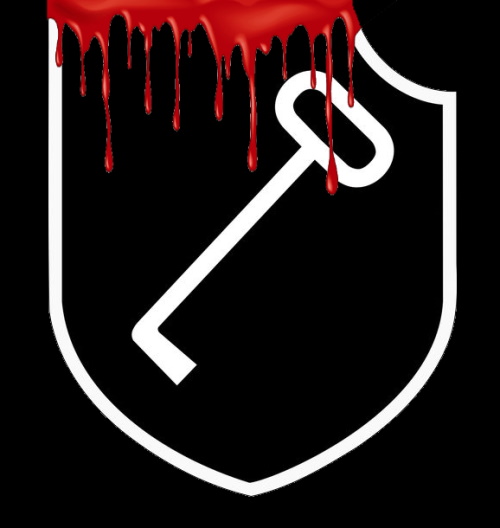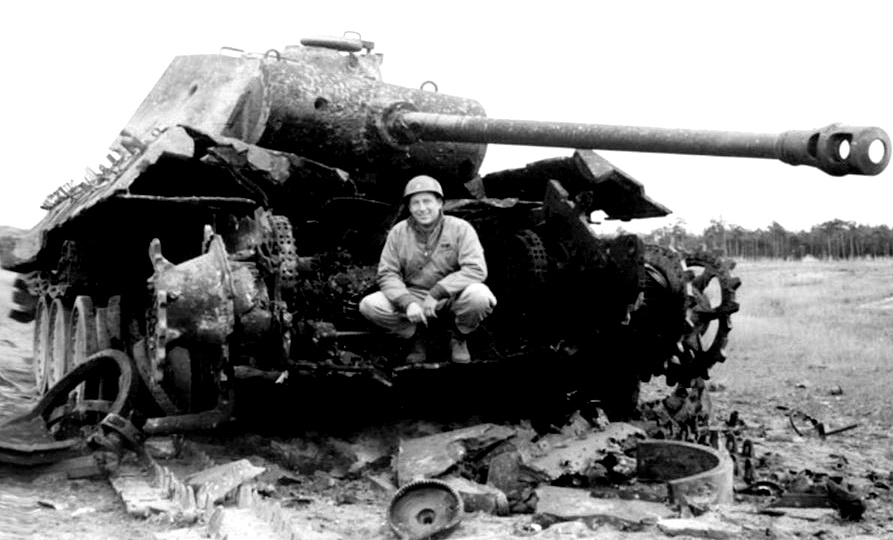 The subcommittee also took note of the fact that one of the witnesses for the prosecution, Kurt Kramm, was the subject of a highly disputed ruling by the court when the court refused to permit the defense attorneys to cross-examine Kramm as to whether or not his testimony had been secured as a result of duress.
The subcommittee also took note of the fact that one of the witnesses for the prosecution, Kurt Kramm, was the subject of a highly disputed ruling by the court when the court refused to permit the defense attorneys to cross-examine Kramm as to whether or not his testimony had been secured as a result of duress.
The subcommittee studied with great interest the ruling of the court and found that the ruling appeared to be technically correct, for the matter had not been raised on direct examination. No foundation had been laid for the fact that the defense counsel in asking the question was attempting to attack the credibility of the witness or his testimony when the ruling was made.
The subcommittee noted that the defense attorneys did not contest the ruling and stated that it was expected that Krarnm would return to the stand. There is no question that he could have been called as a defense witness. However, the defense did not call Kramm to testify regarding any physical duress used on him. The subcommittee took notice of the many statements made by defense attorneys, church people, and others concerning brutality but found that, without exception, they were hearsay to the witnesses and were predicated primarily on the affidavits submitted by the accused themselves after conviction.
 The subcommittee took particular note of first-hand evidence given by persons who were in Schwabisch Hall at the time these brutalities were alleged to have occurred. Dr. Edouard Knorr, a civilian dentist who treated internee prisoners at the prison, made an affidavit to the German defense attorneys stating that he had treated 15 to 20 of the Malmedy prisoners for injuries to the mouth in which teeth had been knocked out and in one case had treated a man for a ruptured jaw. Dr. Knorr died this year of arteriosclerosis and so was not available as a witness. The subcommittee, through investigation, discovered the whereabouts of his assistant who had accompanied him on most of his trips to Schwabisch Hall, and summoned her as a witness. This assistant made an impressive witness before the subcommittee and endeavored to corroborate the statements made in Dr. Knorr’s affidavit. She testified that she had seen very few of these things with her own eyes, but that Dr. Knorr told her of them. Furthermore, Dr. Knorr had been approached by German defense attorneys for his affidavit, and she had helped him to prepare it. She also had been approached by attorneys after the death of Dr. Knorr for the purpose of securing her own affidavit, and she had discussed it before preparation with the defense attorneys. She was asked if Dr. Knorr had maintained any dental records of the Malmedy patients treated by him. She stated that records had been kept but that they had been destroyed some time ago on Dr. Knorr’s orders. She testified further that normally they maintained records of everyone treated by Dr. Knorr for 10 years, but that these particular records had been destroyed within a couple of years after the patients were treateda.
The subcommittee took particular note of first-hand evidence given by persons who were in Schwabisch Hall at the time these brutalities were alleged to have occurred. Dr. Edouard Knorr, a civilian dentist who treated internee prisoners at the prison, made an affidavit to the German defense attorneys stating that he had treated 15 to 20 of the Malmedy prisoners for injuries to the mouth in which teeth had been knocked out and in one case had treated a man for a ruptured jaw. Dr. Knorr died this year of arteriosclerosis and so was not available as a witness. The subcommittee, through investigation, discovered the whereabouts of his assistant who had accompanied him on most of his trips to Schwabisch Hall, and summoned her as a witness. This assistant made an impressive witness before the subcommittee and endeavored to corroborate the statements made in Dr. Knorr’s affidavit. She testified that she had seen very few of these things with her own eyes, but that Dr. Knorr told her of them. Furthermore, Dr. Knorr had been approached by German defense attorneys for his affidavit, and she had helped him to prepare it. She also had been approached by attorneys after the death of Dr. Knorr for the purpose of securing her own affidavit, and she had discussed it before preparation with the defense attorneys. She was asked if Dr. Knorr had maintained any dental records of the Malmedy patients treated by him. She stated that records had been kept but that they had been destroyed some time ago on Dr. Knorr’s orders. She testified further that normally they maintained records of everyone treated by Dr. Knorr for 10 years, but that these particular records had been destroyed within a couple of years after the patients were treateda.
 Certain aspects of the dental testimony are discussed later in the case in connection with the thorough medical exemination made by the doctors. An internee prisoner by the name of Dietrich Schnell prepared an affidavit on October 1, 1948, at the request of Mrs. Sepp Dietrich, the wife of Gen Josef Dietrich, one of the accused in this case. This affidavit indicated a meticulous and exact knowledge of everything that went on in Schwabisch Hall at the time the Malmedy prisoners were there. If the statements were true, they would raise a strong presumption that all the charges made in the various accusations were correct. Dietrich Schnell is an extremely intelligent former Nazi paratrooper. Before the war he was a kreisleiter in the Nazi Party in the vicinity of Goppingen. A kreisleiter was one of the bulwarks of the Nazi Party, and within his area, which consisted of approximately 50.000 persons, Schnell literally had life-and-death authority over the people. Schnell was located by the staff of the subcommittee and interrogated at some length. A copy of that interrogation, which is contained in the subcommittee’s record, indicates clearly that he had carefully memorized the most minute details of his affidavit, including details of conversations which had been held some 3 years earlier. He later was examined under oath by the subcommittee.
Certain aspects of the dental testimony are discussed later in the case in connection with the thorough medical exemination made by the doctors. An internee prisoner by the name of Dietrich Schnell prepared an affidavit on October 1, 1948, at the request of Mrs. Sepp Dietrich, the wife of Gen Josef Dietrich, one of the accused in this case. This affidavit indicated a meticulous and exact knowledge of everything that went on in Schwabisch Hall at the time the Malmedy prisoners were there. If the statements were true, they would raise a strong presumption that all the charges made in the various accusations were correct. Dietrich Schnell is an extremely intelligent former Nazi paratrooper. Before the war he was a kreisleiter in the Nazi Party in the vicinity of Goppingen. A kreisleiter was one of the bulwarks of the Nazi Party, and within his area, which consisted of approximately 50.000 persons, Schnell literally had life-and-death authority over the people. Schnell was located by the staff of the subcommittee and interrogated at some length. A copy of that interrogation, which is contained in the subcommittee’s record, indicates clearly that he had carefully memorized the most minute details of his affidavit, including details of conversations which had been held some 3 years earlier. He later was examined under oath by the subcommittee.
On direct questioning, which went beyond the inaterid in the original affidavit, he changed his story in substantial detail. The conflict in evidence was very noticeable because of the contrast with the exactness of his knowledge of all the matters in his original affidavit. The subcommittee took particular notice of the statements made in his affidavit concerning the suicide of one of the suspects named Freimuth. In his affidavit he gave considerable details of the Freirnuth matter, including the words he used when he was alleged to have shouted from the window of his cell to Schnell.
When the prison was physically examined by the staff members of the subcommittee, with Schnell along for the purpose of checking the various parts of his story, it was noted that the cell number given in his affidavit, and which was confirmed by other evidence, was an interior cell from which Freimuth could not have been seen by Schnell. This fact standing by itself casts doubt on the authenticiby of Schnell’s affidavit. When he later appeared before tho subcommittee, he had grasped the significance of the situation and attempted to change the location of the cell and its number by verbal testimony.
His entire story indicated that it had been carefully prepared and rehearsed. Reduced to its essential detail and under examination, the only direct testimony that he gave to any beating by members of the war crimes interrogation team was one instance which he claimed to have seen quite late at night from a window in the dispensary. He stated, on interrogation, that he saw Lt Perl strike and then kick an accused being questioned. The room in which he claimed he saw this done was established to be the administrative office used by the war crimes investigating team. It was denied by witnesses that this room was ever used for interrogation. Further, they testified that there was interrogation at night on only one occasion. That one interrogation was not conducted by Perl. When Schnell first gave this story on interrogation, he described meticulously how Perl had struck the prisoner with the back of his hand and then demonstrated the way he then kicked him. 
However, Schnell was taken to the prison and placed at the window in the dispensary where he could look into the room in which the alleged incidents were supposed to have taken place. By test it was determined that even a tall man could not be seen below the waist and that it would have been impossible for anyone to have seen a man kick another and describe it as Schnell had done on the preceding evening. He then qualified his earlier statement that he saw Perl kick the man and said he had merely seen a movement of his body which indicated that he was kicking a man, alter which the suspect staggered back into this Schnell also alleged that he had seen the guards beat prisoners with clubs as they were being moved from point to point around the prison. This particular charge was made by others who submitted affidavits but mas denied by other witnesses. Schnell also volunteered the information that a set of gallows had been in the courtyard.
Later examination of German guards, who had been present at the time the Malnedy prisoners were there, disclosed that no gallows had ever been in Schwabisch Hall. When confronted with their statement, Schnell qualified his statement by saying that the gallows had not been erected but had been on the ground and covered with canvas. This was at complete variance with his earlier story. One other very significant item in connection with Schnell’s approach to this case transpired after interrogation by the subcommittee staff. He stated definitely that he had not been in touch with any German attorneys or lawyers in this case but had prepared his affidavit at the request of Mrs. Sepp Dietrich. Through investigation the staff discovered that immediately after interrogation he called Dr. Eugen Leer, a German attorney, who has apparently been coordinating the activities of all these prisoners.
The subcommittee is convinced the Schnell, because of his Nazi affiliations, was a most interested witness. Because of the many discrepancies in relatively minor matters and because of the definite and substantial error in connection with the Freimuth suicide, the subcommittee feels it should give little credence to the testimony of Schnell. Moreover, it is clear that it was intended to fit into the pattern of well-prepared, well-organized testimony, aimed at substantiating the various allegations made concerning brutality.
Another witness by the name of Otto Eble was located through the counterintelligence forces in Europe in the French zone. Eble was the man who alleged that he had had burning matches placed under his fingernails and was the only one, as far as the subcommittee could discover, who alleged that phony priests had been used in securing confessions.
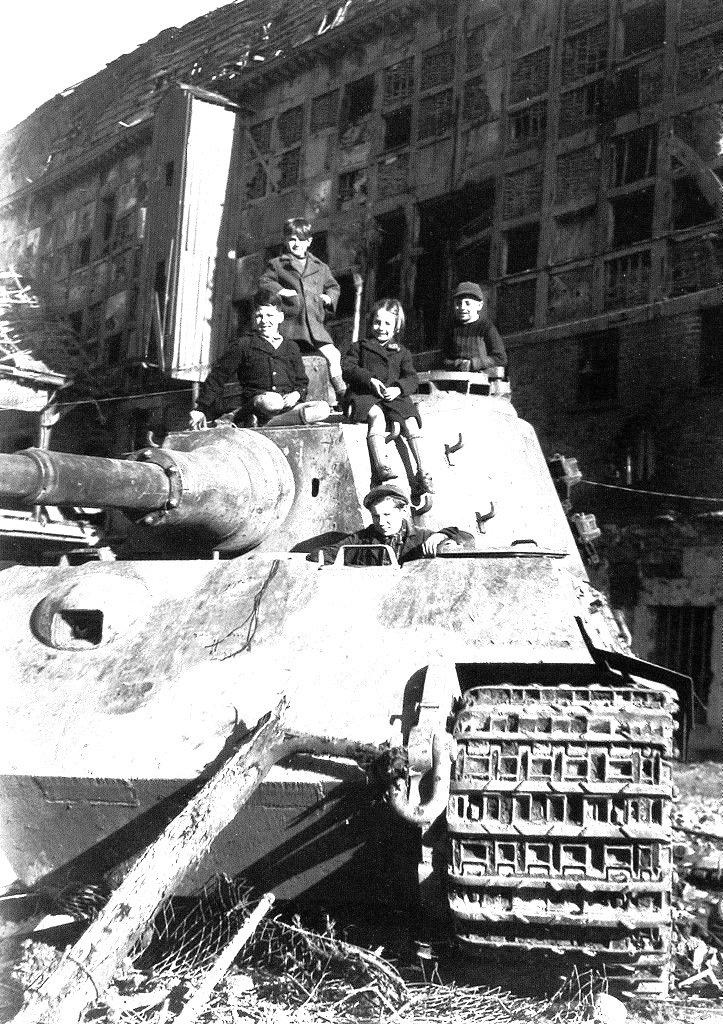 On examination, the subcommittee developed the fact that Eble, who had signed his affidavit as Otto, was in fact named Friedrich Eble; that he had taken his brother’s name of Otto and his rank and used them during the period of time he was under investigation. Furthermore, he has a record of four convictions on the charge of embezzlement, and on occasion, while an internee, escaped and lived for many weeks until discovered under the name of Erwina Sennhausen, an alleged Swiss citizen. On interrogation by French intelligence officers, his brother Otto, whose name had been used, stated that the truth was not in his brother Friedrich. While testifying before the subcommittee, he gave three separate and distinct stories as to why he used his brother’s name and rank, and each of them was probably untrue.
On examination, the subcommittee developed the fact that Eble, who had signed his affidavit as Otto, was in fact named Friedrich Eble; that he had taken his brother’s name of Otto and his rank and used them during the period of time he was under investigation. Furthermore, he has a record of four convictions on the charge of embezzlement, and on occasion, while an internee, escaped and lived for many weeks until discovered under the name of Erwina Sennhausen, an alleged Swiss citizen. On interrogation by French intelligence officers, his brother Otto, whose name had been used, stated that the truth was not in his brother Friedrich. While testifying before the subcommittee, he gave three separate and distinct stories as to why he used his brother’s name and rank, and each of them was probably untrue.
A physical examination was made of Eble to determine if there were any scars indicating burns under his fingernails, which he stated had become infected. No evidence was found to support his claim. The doctors who examined him stated that in their opinion the man was a pathological liar and was incapable of telling the truth. The obviouslp false charges made by this man Eble have been thoroughly publicized by Judge Edward L. Van Roden and others. They have spread as truth the false statements of this convicted criminal and liar, not only throughout our country but abroad. The results of such publicity have been so serious abroad as to warrant the special attention of the subconimittee. Furthermore, the subcommittee cannot but comment that those citizens of the United States who have accepted and published these allegations, without attempting to secure verification of the facts, have done their country a great disservice.
In summary, the subcommittee considered the following evidence on the subject of physical brutality and mistreatment after translating and studying all the affidavits and statements submitted to it. First of all, it accepted as evidence the affidavits submitted by the Germans accused after conviction. It is recognized that these affidavits were self-seeking, and under examination most of them have not been corroborated by the medical evidence and other subcommitte investigations. Second, the subcomnlittee heard the testimony of persons who claimed to be eyewitnesses at Schwabisch Hall of these various matters, and their testimonay has been anaiyzed in some detail earlier in the report. Third, the subcommittee heard the arguments made by defense attorneys, both American and German, as which were not evidence in the normal sense but expressed conclusions on the part of witnesses. Fourth, there were several witnesses, namely Bailey, Tiel, and Slane who testified before the subcommittee, who in their testimony indicated that they had seen incidents which would appear to corroborate, in lund, the statements alleged by the convicted accused. On the other hand, the subcommittee heard the testimony of Col. Edwin J. Carpenter and his interpreter, Paul G. G th, who made an investigation of these alleged physical mistreatments prior to the trial, and whose findings did not support to the slightest degree the claims of physical brutality made in later affidavits by the convicted accused.
 The subcommittee also heard testimony from the war crimes interrogation team personnel, which admittedly was from interested witnesses, but whose testimony was given forcefully and convincingly. Many of these individuals had requested to testify so that they could state their position under oath before the subcommittee. These individuals all testified, categorically, that none of these physical mistreatments or brutalities occurred.
The subcommittee also heard testimony from the war crimes interrogation team personnel, which admittedly was from interested witnesses, but whose testimony was given forcefully and convincingly. Many of these individuals had requested to testify so that they could state their position under oath before the subcommittee. These individuals all testified, categorically, that none of these physical mistreatments or brutalities occurred.
The subcommittee also heard members of the administrative staff of the prison who were responsible for the care and guarding of the prisoners. These witnesses had no self-interest in this matter, and testified strongly and definitely to the fact that there was no physical mistreatment of the prisoner. This testimony was particularly convincing, since it included the testimony of the doctors and medical enlisted personnel who were assigned to Schwabisch Hall for the purpose of caring for the suspects in this case. The subcommittee itself secured a medical staff, consisting of two doctors and a dentist of outstanding qualifications, from the Public Health Service of the United States. This medical staff independenty examined all the Malmedy prisoners who are presently at Landsberg Prison. In addition, they also examined Eble for evidence of physical abuse. They state, of those convicted prisoners at Landsberg, claim that they were not physically mistreated at Schwabisch Hall, allege they were physically mistreated at Schwabisch Hall but do not claim to have received injuries which would leave evidence of a permanent nature, and allege that they were physically mistreated and have injuries of a permanent.
The medical staff pointed out that there was1no question that the 11 prisoners were not subjected to physical mistreatment at Schwabisch Hall and that the second group of 34 prisoners had no physical evidence to support their claims of alleged physical mistreatment. Of the 13 who alleged physical mistreatment with permanent results, the medical evidence does not support, to any degree, the claim of these prisoners. They state that 3 had conditions which definitely were not due to physical mistreatment, and that the remaining 10 showed physical findings which might possibly have resulted from physical mistreatment, but none of these 10 showed evidence of the severe acts alleged by the prisoners. All of the facts and evidence brought to the attention of the subcommittee through the above sources were analyzed and weighed carefully, and the subcommittee believes there is little or no evidence to support a conclusion that there was physical mistreatment by members of the interrogation team in connection with their securing evidence in the Malmedy case. The preponderance of evidence is all to the contrary and there are too many discrepancies which appear in the allegations made concerning such physical mistreatment. On the other hand, the subcommittee recognizes that in individual and isolated cases there may have been instances where individuals were slapped, shoved around, or possibly struck, but is convinced that if this did occur it was the irresponsible act of an individual in the heat of anger in a particular situation.
 Furthermore, it definitely was not a general or condoned practice. There is no substantial evidence to support the belief that any persons were affected, insofar as their convictions were concerned, by physical mistreatment of this kind, even if it might have occurred in isolated cases. The subcommitee is convinced that the confessions made by the prisoners, and the evidence submitted at the trial were not secured through physical mistreatment of the accused.
Furthermore, it definitely was not a general or condoned practice. There is no substantial evidence to support the belief that any persons were affected, insofar as their convictions were concerned, by physical mistreatment of this kind, even if it might have occurred in isolated cases. The subcommitee is convinced that the confessions made by the prisoners, and the evidence submitted at the trial were not secured through physical mistreatment of the accused.
7. Posturing as priests
The charge that members of the American interrogation team postured as priests for the purpose of securing confessions has been widespread throughout our country. This is primarily due to the speeches made by Judge Edward L. Van Roden and the publication of his remarks by the National Council for the Prevention of War, and other similar organization. The sole source of the charge was, insofar as the subcommittee was able to determine, the witness Eble whose testimony was discussed in detail above.
For the reasons previously stated, the subcommittee believes that absolutely no credence can be given to any statement made by Eble, who is a convicted criminal and a liar, and that there is no truth to this charge. It is considered most unfortunate that many prominent religious people have been misled by the use of the uncorroborated statements of this man, and apparently accept the allegation as being true. As will be noted throughout this report, many of the most flagrant charges which have been so widely publicized in this case can be attributed first to the affidavit prepared by Eble, second to the cloak of authority given to his statement through the media of the publications and speeches of Judge  Van Roden, and third by the organized dissemination of this information both in our country and abroad by the National Council for the Prevention of War.
Van Roden, and third by the organized dissemination of this information both in our country and abroad by the National Council for the Prevention of War.
8. Inadequate medical facilities
Many of the affidavits submitted by the persons interrogated at Schwabisch Hall alleged that they were denied medical attention for such ailments as they might have. There is no question that there was an American doctor and enlisted personnel stationed at Schwabisch Hall at all times while the Malmedy prisoners were there. These doctors testified before the subcommittee as did their superior, Capt Evans. Their testimony was clear, professional, and convincing. It is clear that they had complete responsibility for the physical condition of the suspects and that they made every effort to meet their responsibilities. It was also noted that while some suspects allege they did not receive medical attention, many other affidavits make reference to treatment by medical officers, enlisted personnel, and trips to American medical facilities away from Schwabisch Hall.
These latter statements made by some of the suspects corroborate the statements made by the American personnel. Therefore, it is the opinion of the subcommittee that there were adequate medical facilities available and in use for the Malmedy prisoners at Schwabisch Hall. In this connection, the affidavit of Dr. Knorr should again be examined. In this affidavit he claimed that he had treated 15 to 20 cases in which teeth had been knocked out and in 1 case a ruptured jaw.
The dental member of the subcommittee’s staff examined the teeth of all the accused who were convicted and who were confined at the Landsberg Prison. He examined several cases in which teeth were alleged to have been knocked out. His report is contained in the subcommittee record and throws considerable doubt on the truth of the allegation.
It should be noted that only one of this group claimed to have been treated by a German civilian dentist. The rest all stated they were treated by American dental personnel at various points. This tends to place doubt on the accuracy of the affidavit of Dr. Knorr.
 9. Threats against families of the accuseds, and fraternization with the wives of the accuseds
9. Threats against families of the accuseds, and fraternization with the wives of the accuseds
Several of the affidavits in this case allege that members of the interrogation team threatened the prisoners by telling them that ration cards would be taken away from their families and other punitive measures would be taken against them if the suspects in question did not confess. The degree to which such threats were used is hard to establish, but the subcommittee believes that in some cases some of the interrogators did make threats of this kind. It is questionable as to the effect such statements would have on the type of individual under interrogation, but it is hard to believe that this by itself would make a man perjure himself to the point of making a false confession and bearing false witness against his comrades. Therefore, the subcommittee concludes that in some cases such threats might have been used but believes they were not general in character.
There were no charges made that members of the interrogation team fraternized with wives of the accused prior to the time of trial. However, it was developed by the Raymond Board that subsequent to the trial, but before sentences were passed, two members of the interrogation team took several of the wives to the officers club where it was obvious that they were drinking together. While this could have had no possible effect on the outcome of the trial, in the opinion of the subcommittee it showed a lack of good judgment on the part of the individuals concerned and should not be condoned.
 One of those involved, who was not an interrogator, but a clerk with the interrogation team, was sent back to the States as a result of this incident, and the other, testifying before the subcommittee stated that it was the only time that such a thing had occurred, and that he had been wrong. His attitude was such as to convince the subcommittee that all realized that a mistake had been made. There were no charges or evidence that any other members of the investigating team ever fraternized with the wives of the accused. The subcommittee assumes it is the sole incident and that it has been properly handled by the responsible authorities.
One of those involved, who was not an interrogator, but a clerk with the interrogation team, was sent back to the States as a result of this incident, and the other, testifying before the subcommittee stated that it was the only time that such a thing had occurred, and that he had been wrong. His attitude was such as to convince the subcommittee that all realized that a mistake had been made. There were no charges or evidence that any other members of the investigating team ever fraternized with the wives of the accused. The subcommittee assumes it is the sole incident and that it has been properly handled by the responsible authorities.
10. Use of stool pigeons
Many of the affidavits alleged that the interrogation team used stool pigeons for the purpose of securing evidence. This is freely admitted by the members of the interrogation team as a part of their normal practice, and the subcommittee finds no grounds for complaint for such activities. Traditionally the use of stool pigeons has been practiced by our American prosecuting authorities and is a recognized practice in criminal investigations.
11. Tricks of various kinds and mental duress
Practically all of the affidavits alleged that the prisoners had been tricked or mentally harassed to a point where they became confused and as a result signed false confession. The subcommittee made a determined effort to find the nature of these various tricks.
 Apparently the members of the interrogation team gave considerable thought as to how they could break down the resistance, silence, and deception on the part of an individual in order to get him to talk. The pretended use of microphones; the pretense of having information from other accused implicating the suspect being interrogated; the plus and minus system, whereby members of the interrogation team would keep a score in front of the man, putting down a plus when he told the truth and a minus when he was thought to be lying, thereby leading him to believe that mathematically they were going to determine his guilt by the answers he gave; 50 the indentification of a particular mark on his body; and the confronting of individuals with other members of the organization who had turned state’s evidence. All of these methods were used for the purpose of getting the prisoners to talk.
Apparently the members of the interrogation team gave considerable thought as to how they could break down the resistance, silence, and deception on the part of an individual in order to get him to talk. The pretended use of microphones; the pretense of having information from other accused implicating the suspect being interrogated; the plus and minus system, whereby members of the interrogation team would keep a score in front of the man, putting down a plus when he told the truth and a minus when he was thought to be lying, thereby leading him to believe that mathematically they were going to determine his guilt by the answers he gave; 50 the indentification of a particular mark on his body; and the confronting of individuals with other members of the organization who had turned state’s evidence. All of these methods were used for the purpose of getting the prisoners to talk.
There is no question that such methods were used. The subcommittee feels that they cannot condemn them since they represent the usual and accepted methods used in criminal investigations. It would seem that the bit of the success of this interrogation stemmed from the ability to confuse and deceive a group of persons who had had an opportunity to prepare their stories in advance, and who to a marked degree were involved in a conspiracy to avoid the consequences of the acts in which they had participated. These prisoners with a few exceptions were hardened, experienced members of the SS who had been through many campaigns and were used to worse procedure.
12. Promises of acquittal
It was charged that many of the statements were obtained through promising a man that he would go free if he told the truth and thereby implicated others and considerable argument and discussion has already been had on this particular point, and the evidence submitted to the subcommittee is very conflicting. There is no question but that the interrogation team published instructions in the form of SOP No. 4, which in section 4 discussed this particular matter. There is no question but that section 4a specifically forbids that any promise of acquittal be made, but it appears to be a modification of the prohibition in the earlier section. All the members of the interrogation team who testified before the subcommittee stated that no one was promised that he would not be tried if he would turn state’s evidence and implicate others. In fact, SOP No. 4 required that before anyone could make such a promise the officer in charge of the interrogation team had to approve such an agreement, and they categorically stated that this was not done.
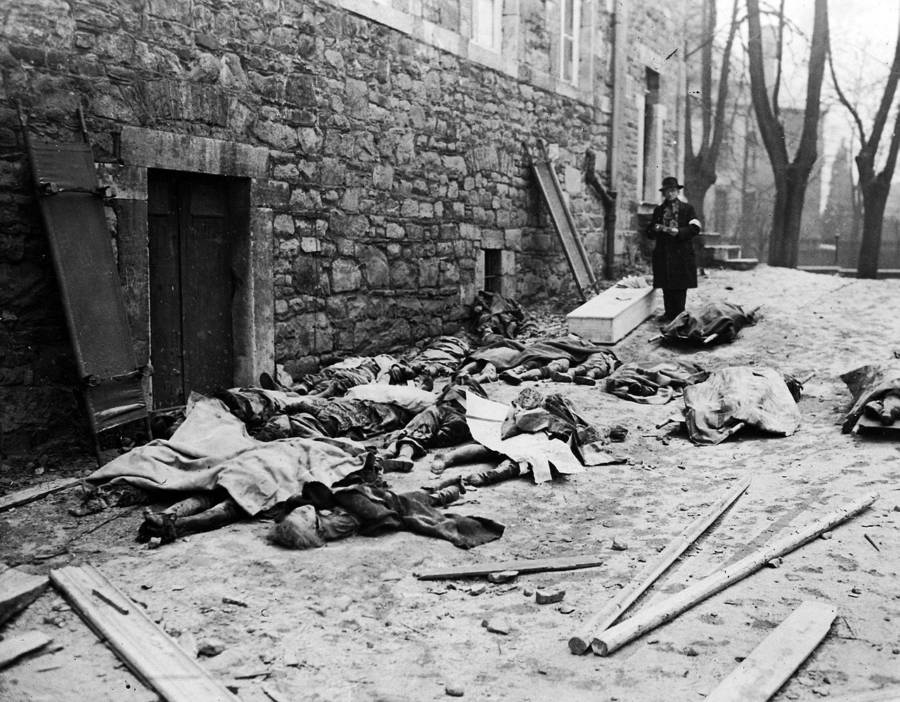 Therefore, it is the belief of the subcommittee that while SOP No. 4 would appear to indicate that such arrangements could have been made, it does not appear from the evidence before the subcommittee that any such promises were made. It is recognized that it is quite a common practice in criminal cases for state’s attorneys in the United States to get a man to turn state’s evidence upon the promise that if he tells the truth he would be recommended to the court for leniency. Here again, the subcommittee finds it extremely difficult to assess blame because of the instructions issued by the interrogation team, particularly since it appears that these instructions were never put into operation. However, this is an area in which great care must always be exercised and there is no question that SOP No. 4 was ambiguous in its phraseology. The subcommittee believes that the final decision as to whether or not any immunity should be granted should be the decision of the court and not of those responsible for conducting the interrogation of suspects.
Therefore, it is the belief of the subcommittee that while SOP No. 4 would appear to indicate that such arrangements could have been made, it does not appear from the evidence before the subcommittee that any such promises were made. It is recognized that it is quite a common practice in criminal cases for state’s attorneys in the United States to get a man to turn state’s evidence upon the promise that if he tells the truth he would be recommended to the court for leniency. Here again, the subcommittee finds it extremely difficult to assess blame because of the instructions issued by the interrogation team, particularly since it appears that these instructions were never put into operation. However, this is an area in which great care must always be exercised and there is no question that SOP No. 4 was ambiguous in its phraseology. The subcommittee believes that the final decision as to whether or not any immunity should be granted should be the decision of the court and not of those responsible for conducting the interrogation of suspects.
13. Fake hangings
Several of the persons who submitted affidavits in this case testified that they were either threatened with hanging or in fact did have a rope placed around their necks and were pulled up off their feet several times until they lost consciousness. One of those who made this claim was Eblel, whose testimony has been thoroughly discredited and is completely unacceptable to this subcommittee. Many witnesses were questioned as to whether any of them ever saw ropes or a rope being used in Schwabisch Hall. This has been denied by every-one with the exception of a witness who testified that prisoners were led around with a rope about their necks. All witnesses questioned on this point, with the exception of Eble, denied that such practices were ever followed. The subcommittee feels in the absence of competent evidence to support the allegations concerning hangings that, in fact, they never happened.
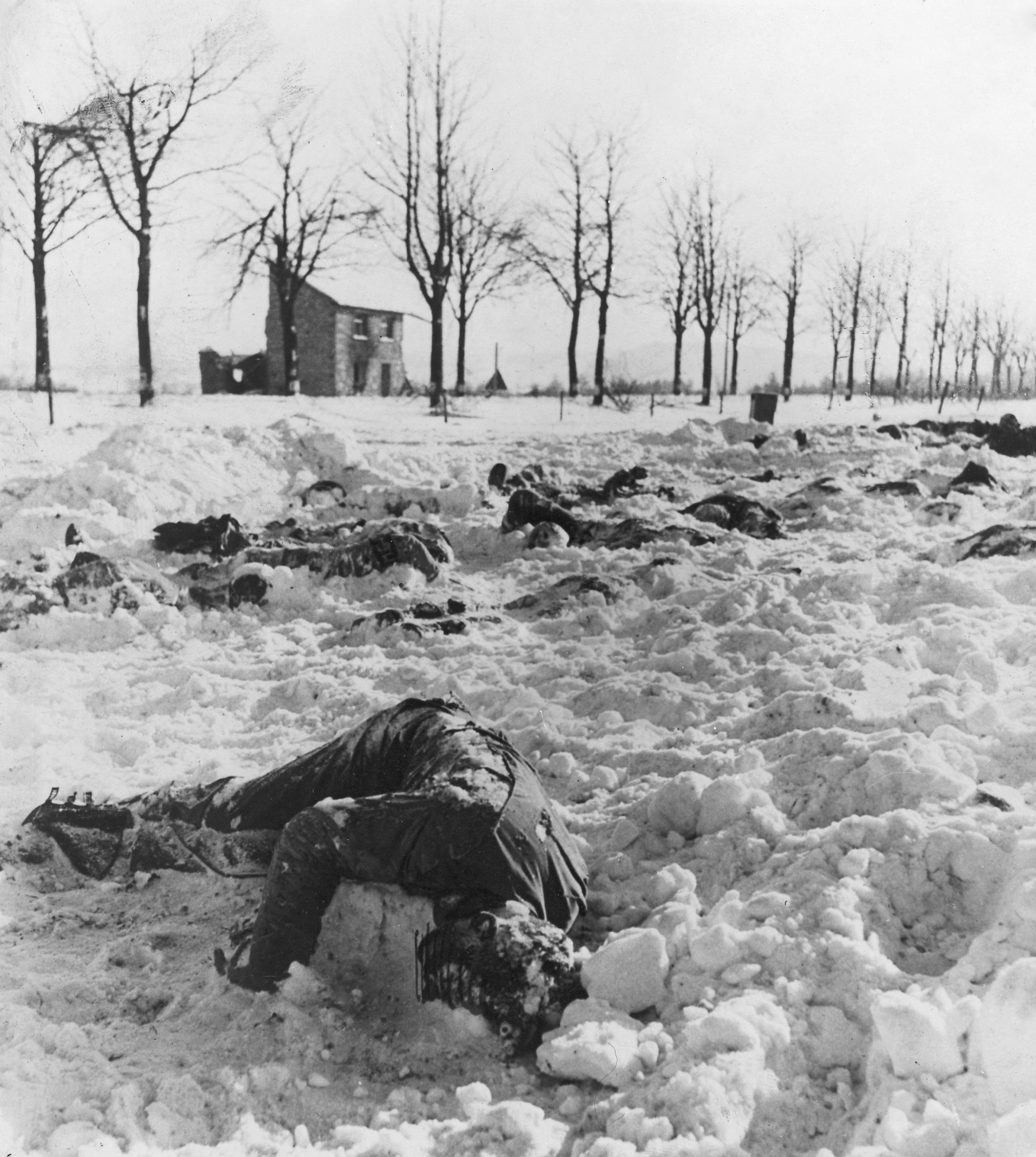 US Victims – Baugnez
US Victims – Baugnez
Donald Bloom, Pvt
Joseph A. Brozowski, Cpl
Samuel P. Burkett, T/5
L. M. Burney, Pfc
Homer S. Carson, Pfc
Robert Cohen, Pfc
John D. Collier, T/5
Howard C. Desch, Pfc
William J. Dunbar, Pvt
Carl B. Fitt, Cpl
Donald P. Flack, Pfc
Carl B. Frey, Pfc
Donald E. Geisler, S/Sgt
Carl R. Genthner, 1/Lt
Sylvester V. Herchelroth, Cpl
Lloyd A. Iames, 2/Lt
Ralph J. Indelicato, Cpl
Raymond E. Lester, Cpl
Selmer H. Leu, T/4
Benjamin Lindt, Sgt
James E. Luers, T/5
Lawrence Martin, Cpl
Thomas E. McDermott, 1/Lt
Halsey J. Miller, Cpl
Roger J. Mills, Capt
Keston E. Mullen, Pvt
John S. Munzinger, 1/Lt
Thomas W. Oliver, Pfc
Paul L. Paden, Pfc
Peter R. Phillips, Pvt
Stanley F. Piasecki, Pvt
Carl H. Rullman, Cpl
Max Schwitzgold, T/5
Wayne L. Scott, Pvt
Irwin M. Sheets, T/4
John M. Shingler, Pvt
Carl M. Stevens, Cpl
Luke S. Swartz, T/5
Elmer W. Wald, Pfc
Dayton E. Wusterbarth, T/5
Killed by Schrapnel
Warren Davis, Pfc
Walter J. Perkowski, Pvt
John M. Rupp Jr., T/4
Died – Bleeding
Carl H. Blough, T/5
Paul R. Carr, Pvt
John Klukavy, Pfc
Richard B. Walker, Pfc
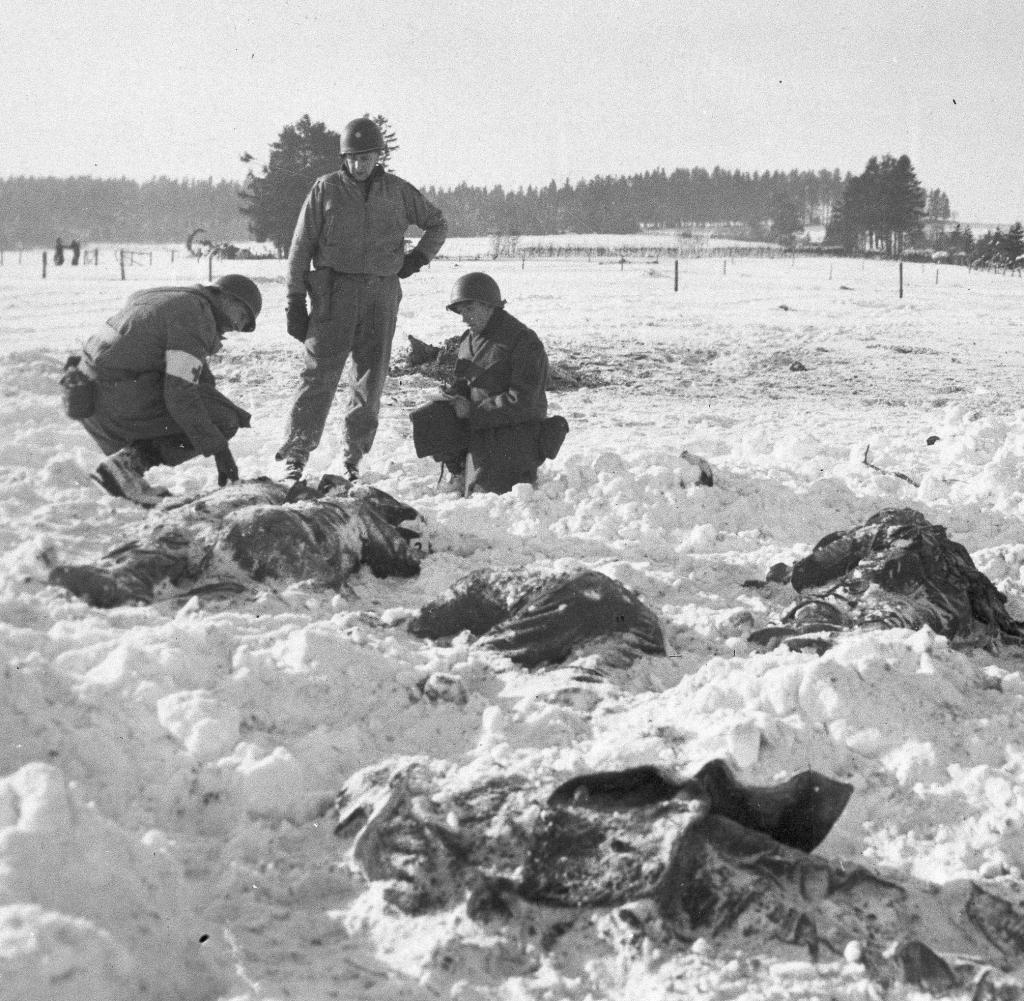 Died – Blow to the Head
Died – Blow to the Head
Charles R. Breon, T/5
Howard W. Laufer, T/5
John D.Osborne, S/Sgt
Died – HE shell-fire
John J. Clymire, Pfc
Charles F. Haines, T/5
George R. Rosenfeld, T/5
Died – Concussion
Frederick Clark, Pfc
Died – MG and small-arms fire
James H. Coates, Pvt
John H. Cobbler, Pvt
Walter A. Franz, Sgt
Solomon S. Goffman, 2/Lt
Samuel A. Hallman, Pvt
Wilson M. Jones Jr., T/5
Oscar R. Jordan, Cpl
Alfred Lengyel Jr., T/5
James G. McGee, T/3
William T. McGovern, T/Sgt
David T. O’Grady, Cpl
Gilbert R. Pittman, Pvt
Perry L. Reardon, 1/Lt
Oscar Saylor, Pvt
Robert J. Snyder, Sgt
Alphonse J. Stabulis, Sgt
George B. Steffy, T/4
Thomas F. Watt, T/5
Vester H. Wiles, T/5
Died – Crushed (Tanks)
Allen M. Lucas, T/4
Robert L. McKinney, T/5
William H. Moore, Cpl
Died – Unknown Causes
Paul G. Davidson, T/Sgt
Charles E. Hall, Pfc
Alfred Kinsman, Sgt
David M. Murray, Pfc
 Officially declared Dead
Officially declared Dead
Elwood E. Thomas, Pvt
Wereth Massacre
December 17, 1944
(Murdered by 1.SS LSSAH
Curtis Adams, Pvt
Mager Bradley, Cpl
George Davis Jr., Pfc
Thomas Forte, S/Sgt
Robert Green, T/5
James Leatherwood, Pfc
Nathaniel Moss, Pvt
George Motten, Pfc
William Pritchett, Pvt
James Stewart, T/4
Due Turner, Pfc
